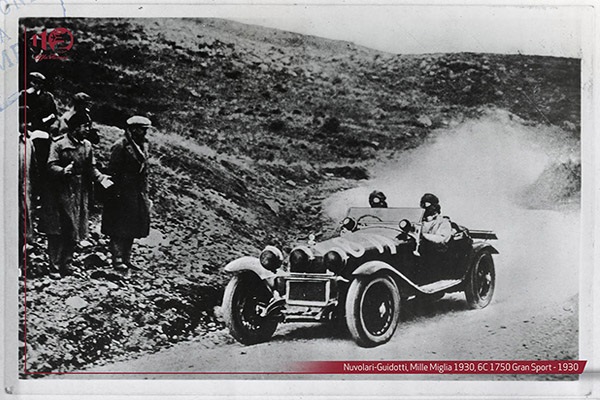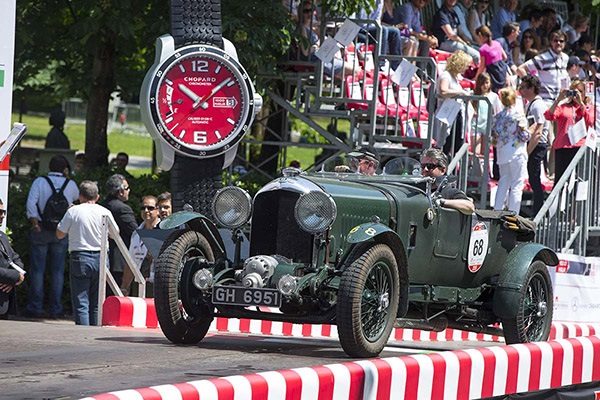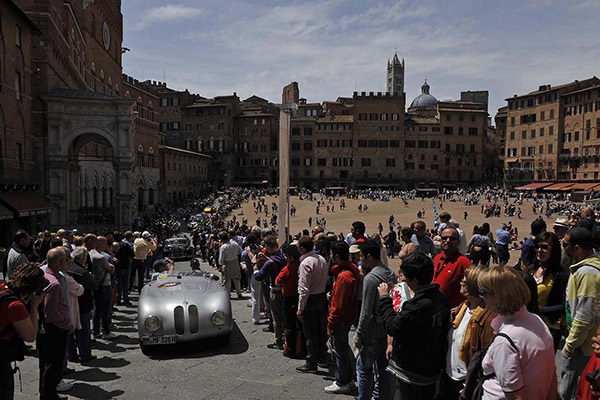What is the Mille Miglia?
Referred to in hushed tones by classic car aficionados, and regarded as ‘the most beautiful race in the world’, the Mille Miglia is a motoring event of the same caliber and legend as the likes of the 24h Le Mans, Monaco Grand Prix, or Indy 500.
A very different type of race from those mentioned above, the Mille Miglia was a time trial, ran from Brescia to Rome, and back again, covering, as the name suggests for those who’s Italian is up to scratch, 1,000 miles. Over the years it evolved, as all great races have, so here we look at its past and present.

Mille Miglia in the beginning
The brainchild of four key people, the Mille Miglia owes its success to journalist Giovanni Canestrini, Director of the Automobile Club of Brescia Renzo Castagneto, and Counts Aymo Maggi and Franco Mazzotti.
It was Castagneto’s contacts and organisational skills that really drove the event forward in a practical fashion, and encompassed the whole town in its planning and participation. The first race was held in March 1927, with competitors starting on 26th, and the town waking on the 27th to news of the first cars returning. Just after 6am, a large crowd welcomed the first cars back, in this case the Lancia Lambdas, and then the OM 665 S of Nando Minoja and Giuseppe Morandi – the winners, having covered the course in 21h 04m and 48sec.

The racers
Within a few short years, the order of the event settled down, along with its start at the newly finished Piazza della Vittoria. And the race attracted the cream of the world’s racing drivers and car manufacturers.
Names such as Alfa Romeo, Mercedes-Benz, BMW, Ferrari, and Lancia all took outright wins, and the likes of Maserati, Fiat-Abarth, Porsche, Peugeot, Renault, Alpine, and Lotus all entered over the years.

The legend
Organisers hosted races each year through to 1957, apart from 1939, and then 1941-46 because of the war. A host of great names and cars participated and won the prestigious event, but it is the 1955 race that has gone down in legend. It deserves a piece of its own, but in summary, Stirling Moss and co-driver Denis Jenkinson took victory in a Mercedes-Benz 300 SLR.
The extraordinary part is that not only was the Mercedes not the fastest car in the field – the Ferrari 735 LM of Eugenio Castellotti was quicker initially, but suffered a mechanical failure by being pushed too hard – but Moss and ‘Jenks’ used an innovative pace-note system that allowed for a dominant final time.
As with other races, the competitors were released at one minute intervals, with the cars in slower classes released earlier, to minimise time for stewards and spectators to wait, and roads to be closed – the route was run entirely on public roads after all.

Earlier in the year, the two Brits had reconnoitred the route, and made meticulous notes for all 992 miles, cleverly written on a scroll of paper, for ease of reading. It gave Moss absolute faith in the notes read out, so he could take crests flat out, if the notes said it was straight. It’s similar to the system used by all rally drivers now, but at the time, was unheard of in such detail, and the Italian drivers with local knowledge often didn’t have a co-driver at all.
Because of Moss’ skill and the pace notes, the 722 Mercedes-Benz SLR – the numbers indicated the departure time; here 7:22 am – the car got around the route with an average time of 99mph, in 10h 07m 48s, a pace that has never been beaten.
The present
That’s in part because the race was only held another two years. The race had always been dangerous, for both drivers and spectators, but in 1957, two fatal crashes occurred, 12 people in all, one of which too the lives of nine spectators, of whom five were children.
For the next few years, the event was held as a rally time trial, with competitors required to keep to speed limits, apart from a few special stages. And then in 1961, this halted too.

However, it was revived as the Mille Miglia Storica in 1977, a parade for pre-1957 cars, which tempts famous racers and stunning cars to tour northern Italy. It’s supported by warm-up events, and ‘Mille Miglia’ runs held in other parts of the world, and is as important a date on the classic car calendar as the Goodwood Revival, Pebble Beach, or Villa d’Este. It’s well worth a visit to see some extraordinary cars in a stunning setting, and play a part in continuing the legacy of the ‘Red Arrow’.

COMMENT